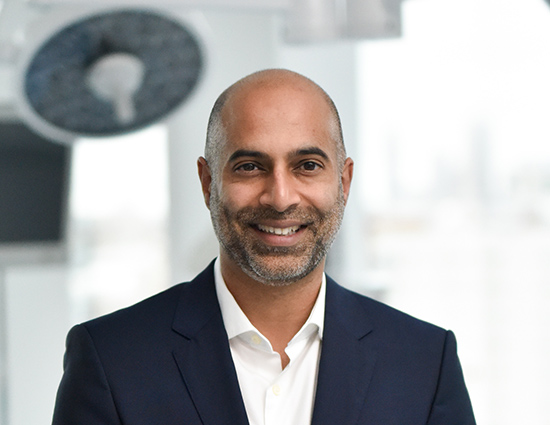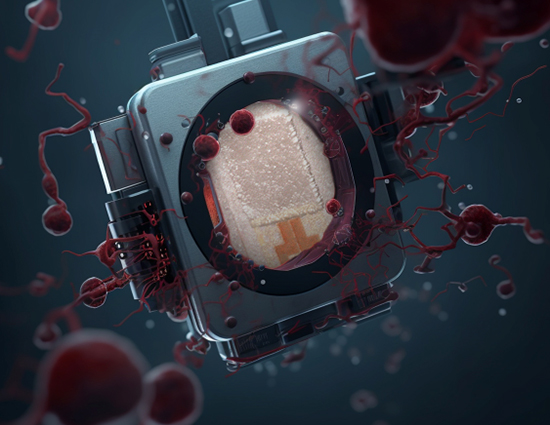With technology innovation, pharma can drive targeted delivery and seize market opportunity
The ground is shifting in the global pharma market. Technology innovations are finally able to start realising health concepts that have been talked about for years. Something has to give, and I believe the time to act is now. The first mover to establish a compelling delivery platform over the next five years stands to gain an insurmountable market advantage that will endure for some time.
In this article, I plan to unpack three key areas of innovation with the potency to transform the future of healthcare and patient wellbeing. They are the move towards targeted therapies; the focus on usability and patient capability in next-generation drug delivery; and the coming digital transformation of the pharma product development process.
Let’s begin with the paradigm shift that direct-to-organ delivery represents. The restlessness in healthcare for the Holy Grail of targeted therapies is palpable. We imagine a future where treatments zero in on problem areas, sparing the rest of the body from the fallout of a scattergun approach. Alluring yes, but significant challenges remain.
The vision of enhancing pharmacokinetics and dynamics – catapulting treatment efficacy while minimising physiological burden on patients – is a shared aspiration. But it is not a straightforward objective. While the science is evolving rapidly and taking us to the brink of a revolution, the concept is still in its infancy and practical application remains distant.
What if, instead, we took a step back and looked at an adjacent path? Minimally invasive access approaches represent a tantalising alternative. Why not hand-deliver treatments directly to the problem zones? This method would require lower volumes and reduce off-target effects.
Forgive my blunt assertion, but I think pharma will be too far out of its depth to attempt this solo. Collaboration at the intersection of technology development, medical device manufacturing and surgical robotics is the key. The intricacy of direct-to-organ delivery is a multidisciplinary challenge, stretching beyond a single entity’s expertise, technical capabilities, and comfort zone.
Mutual cooperation with technology development houses, medical device manufacturers and surgical robotics companies is essential. Yet, such partnerships are complex, with the need to establish and balance liabilities, indemnities and viable commercial revenue models. Perhaps this why we’ve not yet seen a spike in collaborative relationships within the space.
A small number of biotech and pharma companies have explored such an approach for different organs and in different capacities – but they’ve faced technical challenges in validation and scale-up.
User-centric design
Turning to usability now and my colleague Tim Phillips recently spoke on the direct-to-organ subject at the Drug Delivery & Formulation Summit in Boston. During discussions it was evident that user-centric design for such novel approaches was crucial. User profiles, user journeys, capabilities and the impacts of aging, disease progression, or comorbidities must be considered from the outset.
Biologic formulations, often more viscous and requiring larger dose volumes than small molecules (think 10-100cP), can yield significantly higher delivery forces with increased injection pain and poorer control over delivery speed. Another notable trend is the migration towards small, refillable, drug-eluting implants.
While acceptance may be an initial concern, the option of at-home self-administration is gaining traction. Just think about the meteoric rise of Ozempic や Wegovy – both regular subcutaneous injections. The enthusiasm shown by the general population to self-inject for the goal of losing weight, truly upends long-known ‘truths’ about parenteral drug delivery!
Clearly, patients are becoming increasingly open to embrace change and interventions that enhance their quality of life. The question is this. Is healthcare also willing to develop novel solutions to facilitate patient independence in the era of biologics?
I believe delivery innovation must include accessibility and user experience solutions – without adding undue complexity or cost to devices. Such developments must be integrated, engineered, verified and validated early to avoid derailing timelines and commercial success.
Digital technologies and AI
The FDA’s push for digital technologies and the implementation of artificial intelligence (AI) and machine learning (ML) – with nearly 30 guidance documents released in the last three years – underscores the significance of these irreversible trends within healthcare.
AI, data analytics and advanced modelling and simulation are theoretically the most impactful for pharma business. They promise to improve decision making capability and speed while reducing burden on healthcare providers. They have the capability to provide valuable insights on products into an adaptive and prescriptive quality management system (QMS). Increasingly they are viewed as a reliable input into verification and validation processes for medical devices. Yet early attempts at combination product connectivity yielded limited user value or financial returns, potentially breeding reluctance for industry leadership to invest further.
Where is the missing link? The promise of improved patient outcomes through connectivity hinges on creating a comprehensive digital ecosystem. We must move from fragmented and decentralised quality systems to a more coherent centralised system that offers unparalleled product development, lifecycle management and patient experience. This is an endeavour that is yet to fully materialise – yet once again it is ripe with opportunity.
In summary, my message for ambitious pharma executives and other industry stakeholders is pretty clearcut, the road ahead is undeniably fraught with challenges, but with challenges comes innovation and advancement. These concepts have been spoken about for years, but the underlying technologies are now mature enough to bring them to reality and bring great potential benefits for industry and patients alike. The time to act is now. The healthcare frontier stands at a crossroads. Reach out to me by email if you’d like to continue the conversation, I’d love to hear from you.
Tim Phillips, a human factors specialist at Cambridge Consultants, was interviewed for this article.





